So the appearance of the KFA2 GeForce GTX 1080 Ti HOF (Hall Of Fame) really has nothing to do with kleckern. There is already a really good knock ingonated in the packaging. Speaking of which, a block is also the card itself, because it is not only large, but also really heavy. If so, because already.
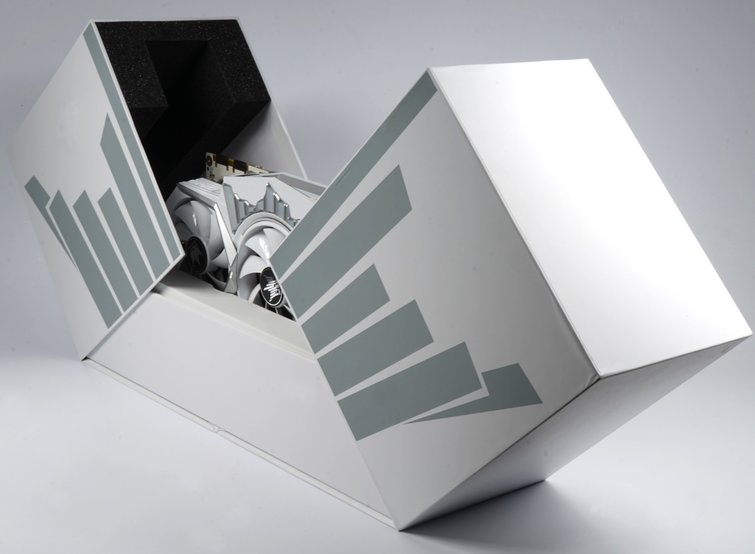
Since the actual performance of all board partner cards depends more on the actual boost clock achieved, and thus causally depends on the cooling, the power target and above all the quality of the respective chip, any test based only on benchmark bars is more of a Random snapshot of a single specimen. This is precisely why we have focused on the actual technical implementation of each model and have been able to document this very well with our equipment.
Unboxing, dimensions and connections
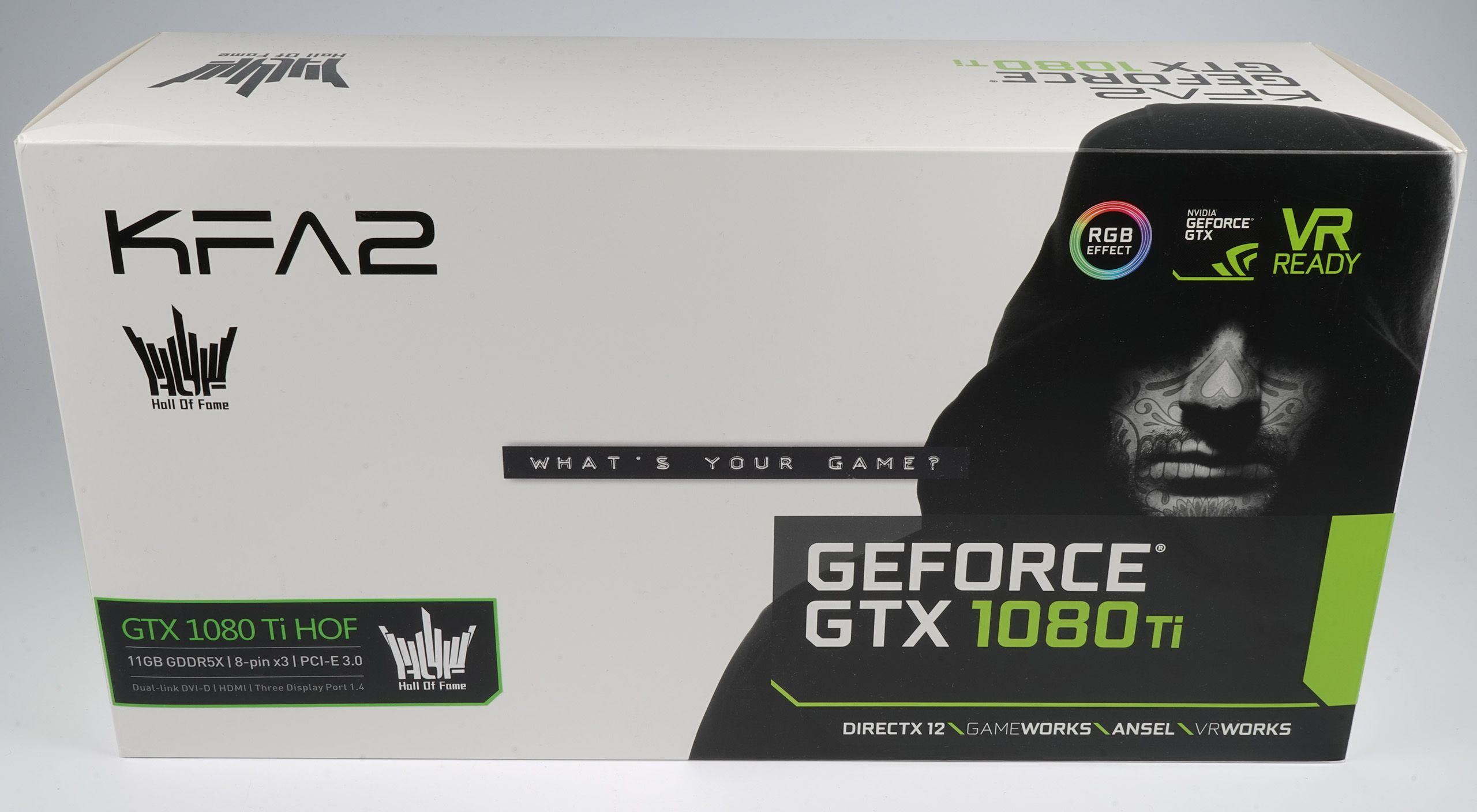
The map is powerful, visual. as well as haptically conspicuous and thus truly nothing for discouraged little spirits. Galax / KFA2 packs this monster into a handsome folding box and thus also upgrades the unboxing process neatly. But it will be up to us later to test the inner values in more detail.
There are plenty of accessories, although the three Molex to 8-pin adapters would probably have been better for safety reasons. At the latest with AWG20 cables of simple power supplies, fire danger is called for here, especially since the sufficient presence of the PCIe connections corresponds quite well with the real power output of most current power supplies. What is missing here cannot be conjured up.
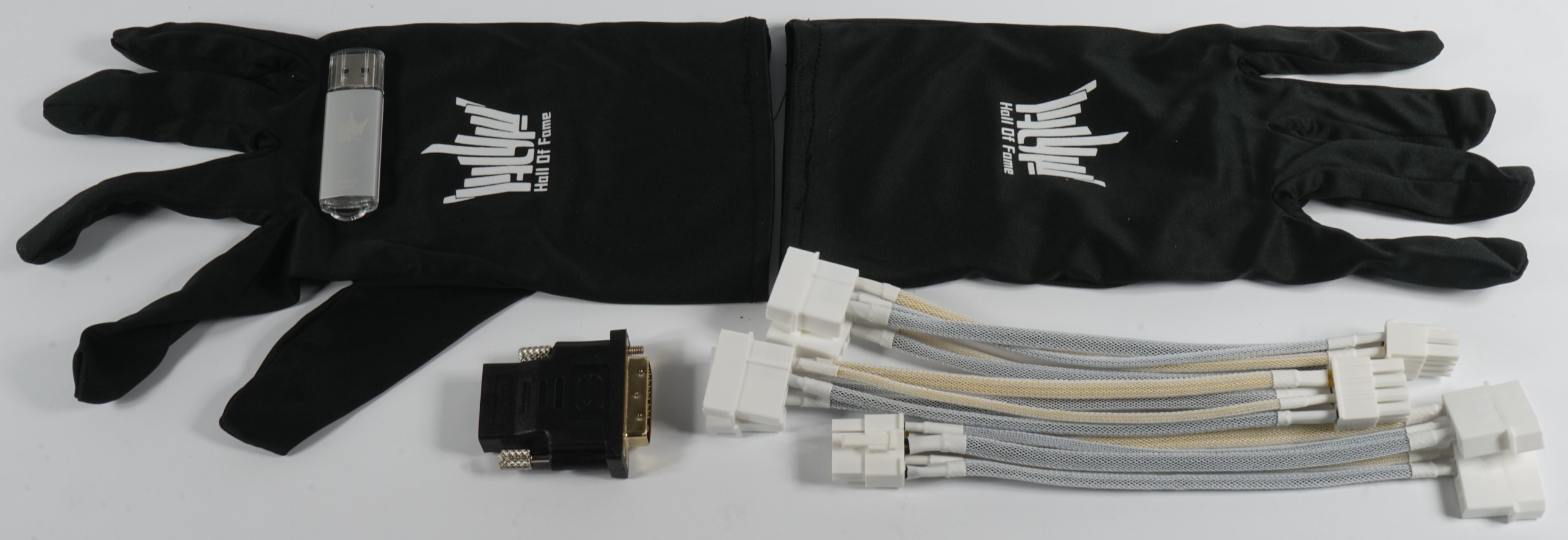
A nice gag is the so-called LuminHold, a Plexiglas construction with RGB illumination, which can also be screwed on via the expansion slots and connected to the graphics card for direct control. However, the required software must be downloaded and installed separately, because only the manuals in PDF format and Nvidia's GeForce Experience are located on the enclosed USB stick. After all, the annoying DVD has finally been saved.

With an extreme weight of 1.689 kilos, an above-average 31.8 cm real installation length (outer edge slot aperture to the end of the cover), an extreme height of 14.5 cm (upper edge motherboard slot to top edge cover) and a mounting depth of a massive 5.4 cm, this 2.5 cm is slot card is the most powerful card tested so far in the field. It is also important to note that on the back side there will be a further approx. 0.5 cm of space are required, which should be taken into account in large tower coolers.
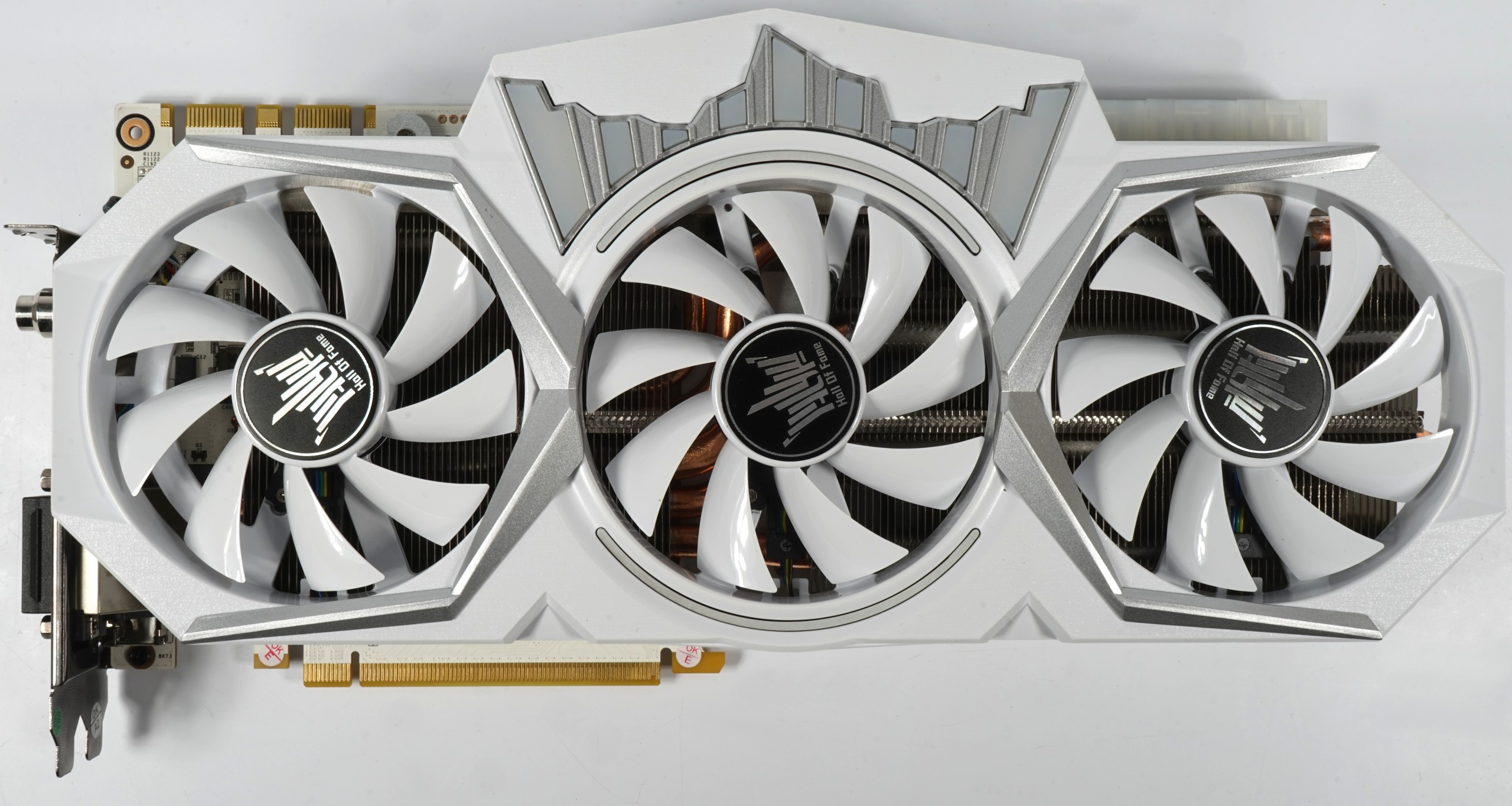 |
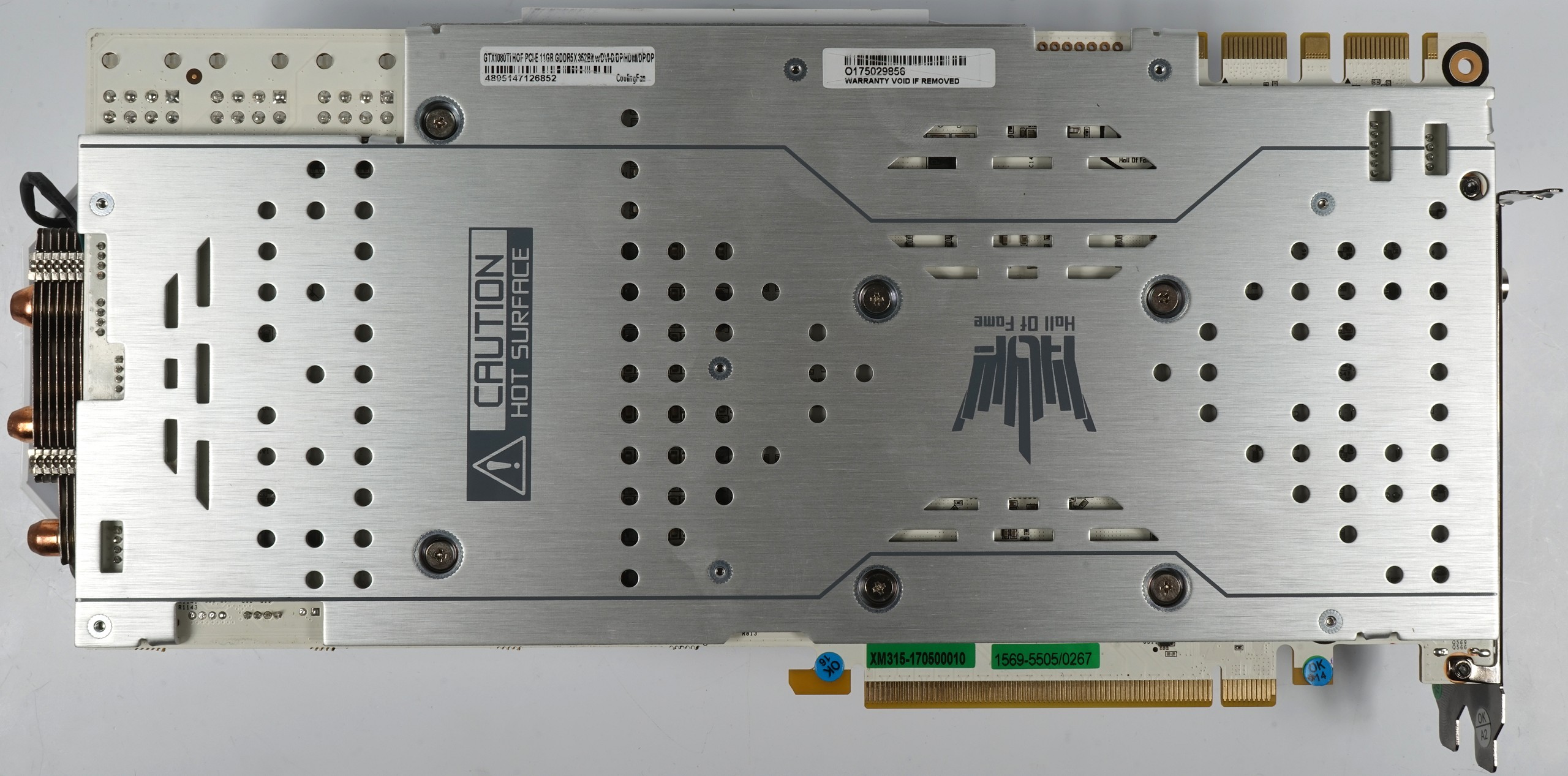 |
The material mix of plastic for the cover is a matter of taste, but at least pure white is still quite rare on the market. The design line of the entire HOF cards is consistently followed up and you will not find any real optical surprises besides the really expansive dimensions. Whether one of the plastic baroques will like it at the end, everyone has to make up for themselves.
The backplate is made of brushed aluminium, which is coated in black on the inside and is also passively used for cooling. The top is dominated by a backlit LCD display and the three (!) white 8-pin power supply connectors. These sit 180° rotated at the end of the board of the top.

The rather coarsely dissolving, backlit B/W display is intended for displaying a logo or after installing the appropriate software also for the output of clock, fan and voltages and much more. The optical gain in no worse, as long as a side window is present in the housing and the card has not been installed vertically by riser cable.
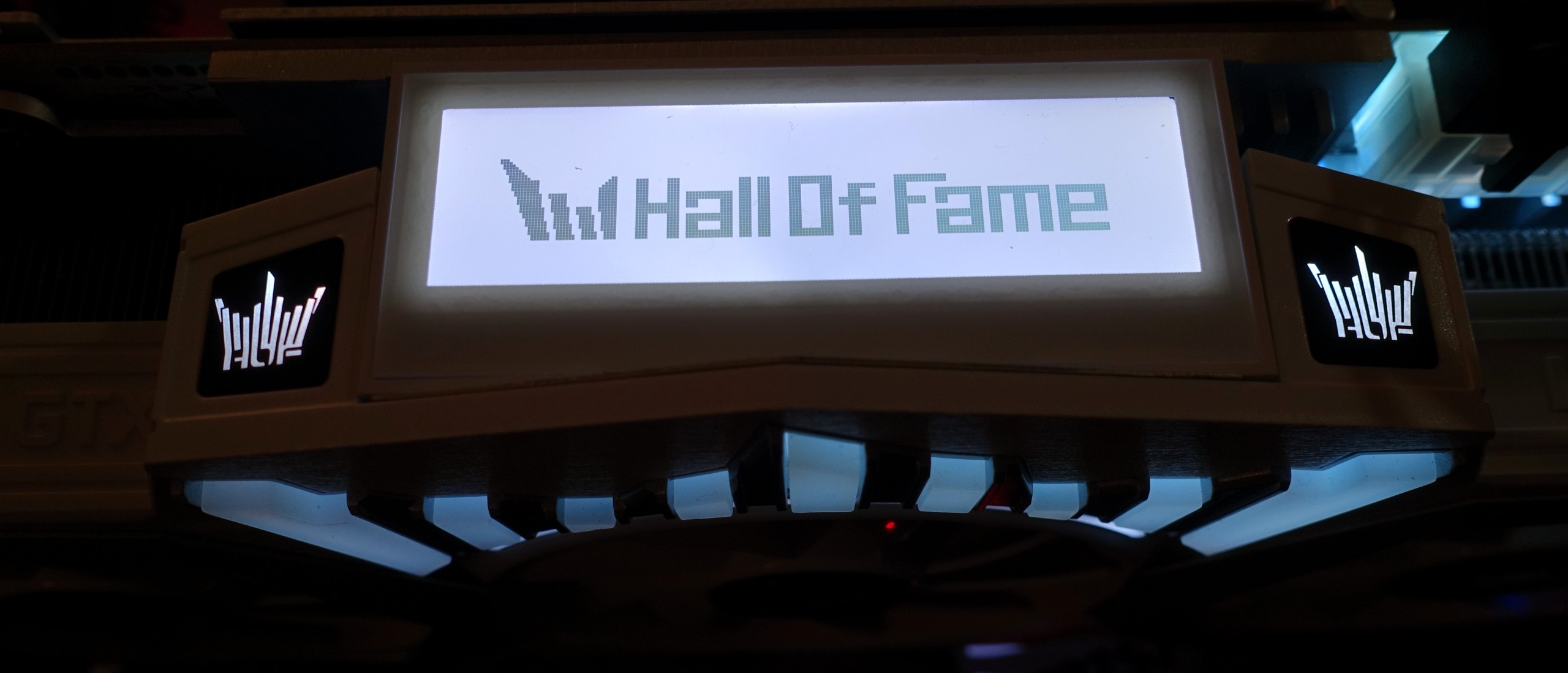
The bottom and top show the vertical slat orientation of the cooler and the absence of a VRM heat sink that could actively cool other assemblies. Instead, as usual, one relies on an assembly frame between the radiator and the board, which should have a stabilizing and cooling function, but has not been implemented quite consistently. But more on that later.

The end of the map shows four 8 mm heatpipes for the right part of the radiator structure. However, from this side the fifth, a bent 6 mm heatpipe, is not visible from the outside. But more on that later. When it comes to connectivity, you're more likely to rely on standard costs from an HDMI 2.0 port, as well as three DisplayPort 1.4 jacks and a revived dual-link DVI-D connector (pictured right). Nvidia had already saved it as a precautionary measure when it came to reference design.
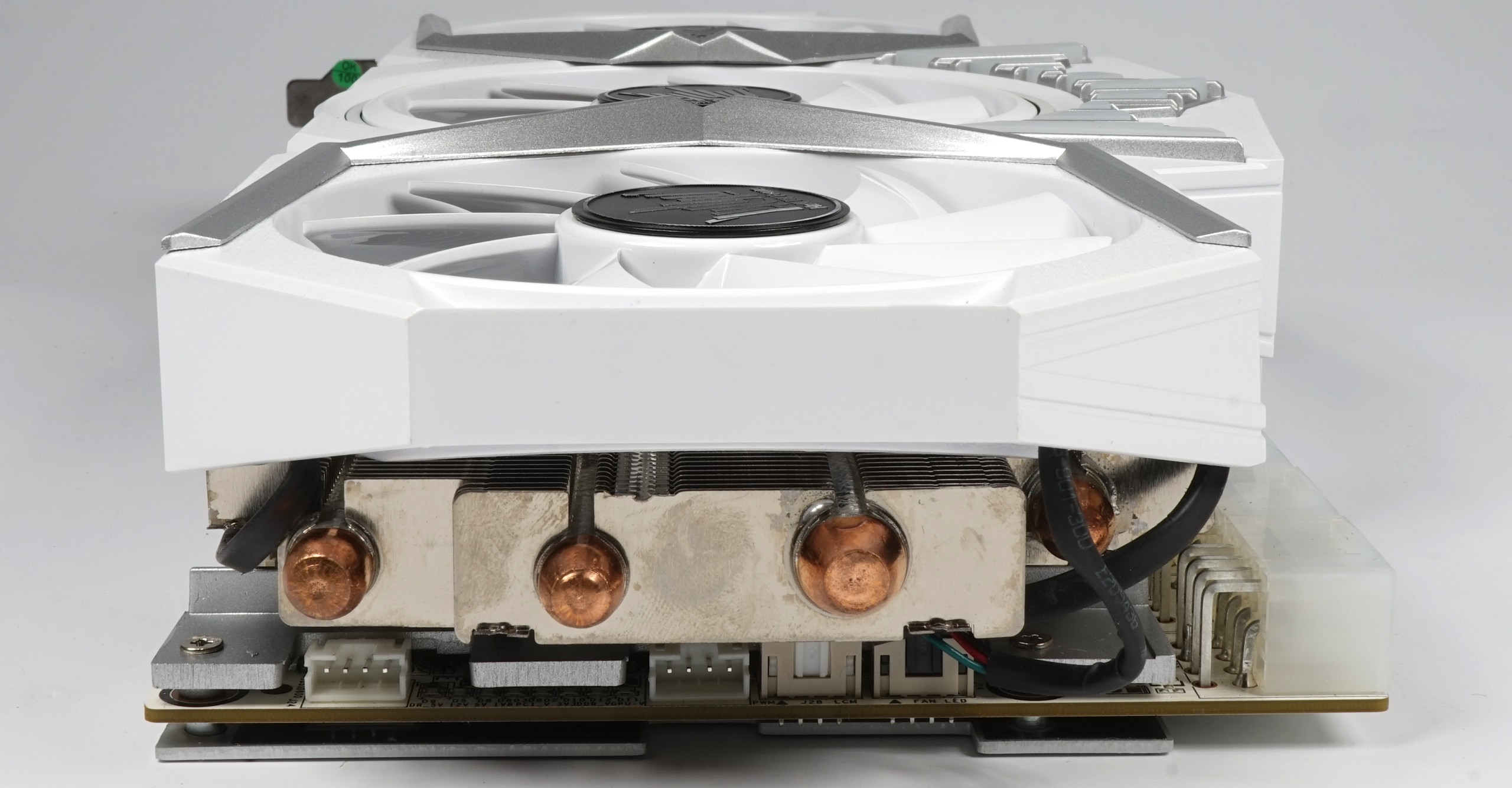 |
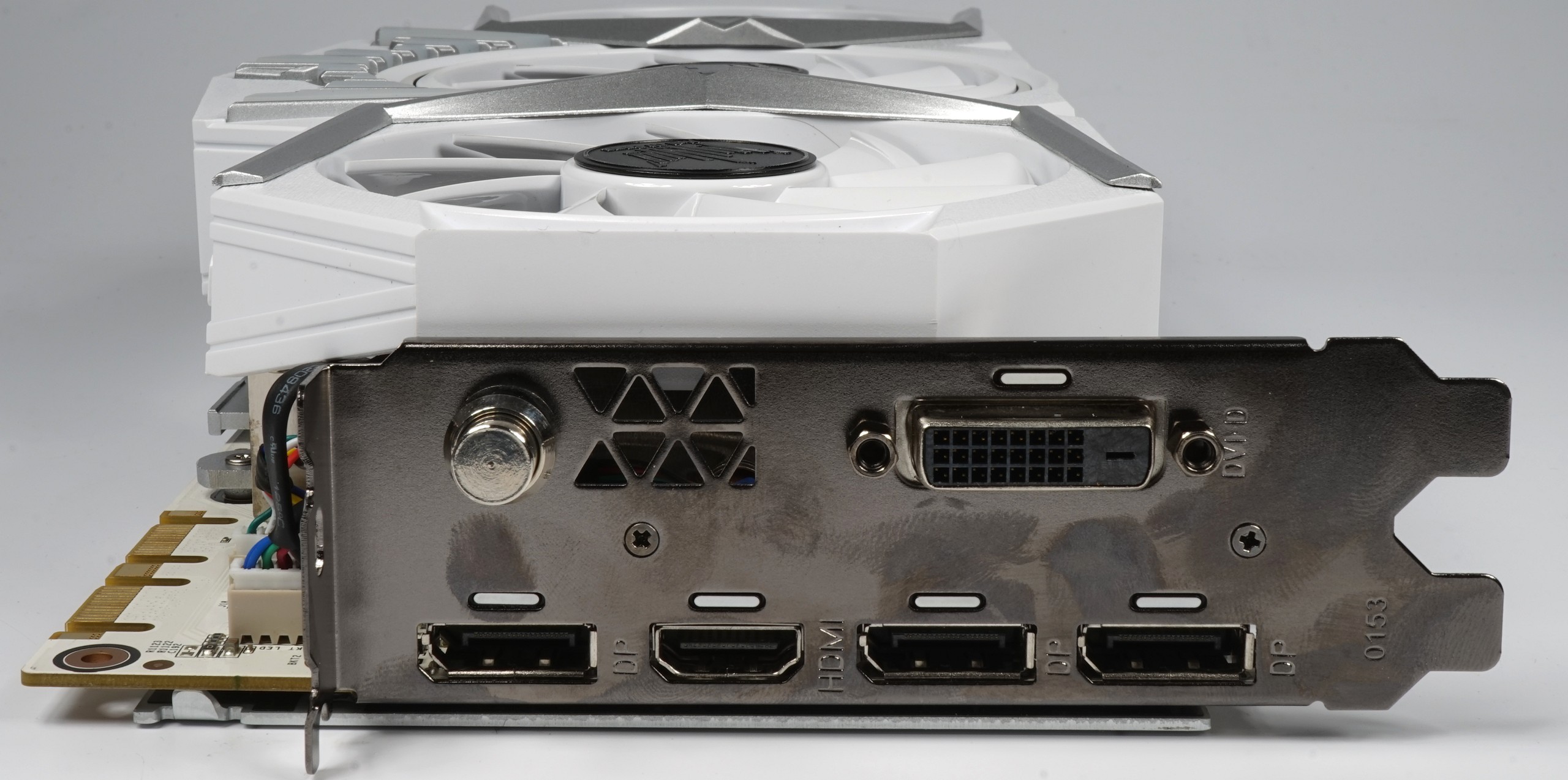 |
Specifications
The GPU-Z screenshot shows us the most important key data in advance, whereby the actual boost achieved with our model was significantly higher:
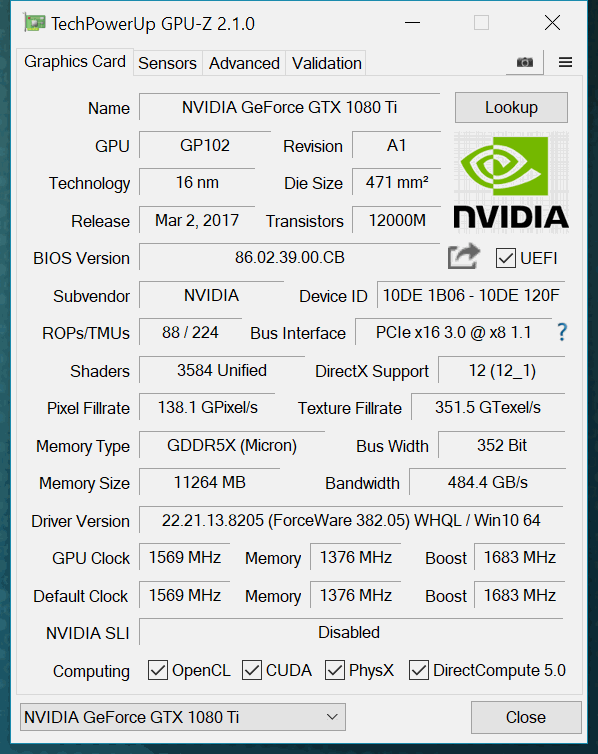
Finally, the whole thing again as a tabular comparison to the other relevant graphics card models:
| Nvidia Titan X – (Pascal) Mr President, I would like to |
Nvidia Geforce GTX 1080 Ti FE |
Galax/KFA2 GTX 1080 Ti Hall Of Fame |
Nvidia Geforce GTX 1080 FE |
Nvidia Geforce GTX 980 Ti |
|
|---|---|---|---|---|---|
| Gpu |
GP102 | GP102 | GP102 | GP104 | GM200 |
| CUDA cores |
3584 | 3584 | 3584 | 2560 | 2816 |
| Base clock | 1417 MHz | 1480 MHz | 1569 MHz |
1607 MHz | 1000 MHz |
| Boost clock |
1531 MHz+ | 1582 MHz+ | 1683 MHz |
1733 MHz+ | 1076 MHz+ |
| Memory Size & Type |
12 GByte GDDR5X |
11 GByte GDDR5X |
11 GByte GDDR5X |
8 GByte GDDR5X |
6 GByte GDDR5 |
| The size |
471 mm2 | 471 mm2 | 471 mm2 | 314 mm2 | 601 mm2 |
| Technology |
16 nm | 16 nm | 16 nm | 16 nm | 28 nm |
| Transistors |
12 billion | 12 billion | 12 billion | 7.2 billion | 8 billion |
| Streaming Multiprocessors (SM) |
28 | 28 | 28 |
20 | 22 |
| GFLOPS (basic clock) |
10.157 | 10.609 | 11.068 |
8.228 | 5.632 |
| Texture Units |
224 | 224 | 224 | 160 | 176 |
| Texture fill rate |
317.4 GT/s | 331.5 GT/s | 351.5 GT/s |
257.1 GT/s | 214 GT/s |
| Rops |
96 | 88 | 88 |
64 | 96 |
| Pixel fill rate |
136 GPix/s | 130.24 GPix/s | 138.1 GPix/s |
114.2 GPix/s | 116.7 GPix/s |
| Storage data rate |
10 Gbps | 11 Gbps | 11 Gbps | 10 Gbps | 7 Gbps |
| Storage bus |
384 bits | 352 bits | 352 bits | 256 bits | 384 bits |
| Memory bandwidth |
480 GByte/s | 484.4 GByte/s | 484.4 GByte/s | 320 GByte/s | 336 GByte/s |
| L2 cache |
3 MByte | 2816 KByte | 2816 KByte | 2 MByte | 3 MByte |
| Tdp |
250 watts | 250 watts | 275 Watt (PT) |
180 watts | 250 watts |
Test system and measurement methods
The new test system and the methodology have already been described in great detail in the basic article "How We Test Graphics Cards" (English: "How We Test Graphics Cards") and therefore, for the sake of simplicity, we now only refer to this detailed Description. So if you want to read everything again, you are welcome to do so. However, we have improved CPU and cooling once again in order to largely exclude possible CPU bottle necks for this fast card.
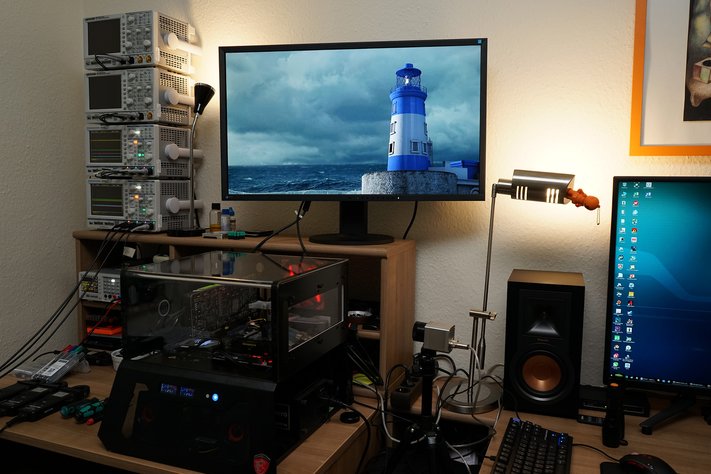
If you are interested, the summary in table form quickly provides a brief overview:
| Test systems and measuring rooms | |
|---|---|
| Hardware: |
Intel Core i7-6900K -4.3GHz MSI X99S XPower Gaming Titanium Corsair Vengeance DDR4-3200 1x 1 TByte Toshiba OCZ RD400 (M.2, System SSD) 2x 960 GByte Toshiba OCZ TR150 (Storage, Images) Be Quiet Dark Power Pro 11, 850-watt power supply Windows 10 Pro (all updates) |
| Cooling: |
Alphacool Ice Block XPX Alphacool Ice Age 2000 Chiller 2x Be Quiet! Silent Wings 3 PWM (Closed Case Simulation) Thermal Grizzly Kryonaut (for cooler change) |
| Housing: |
Lian Li PC-T70 with expansion kit and modifications Modes: Open Benchtable, Closed Case |
| Monitor: | Eizo EV3237-BK |
| Power consumption: |
non-contact DC measurement on the PCIe slot (Riser-Card) non-contact DC measurement on the external PCIe power supply Direct voltage measurement on the respective feeders and on the power supply 2x Rohde & Schwarz HMO 3054, 500 MHz multi-channel oscillograph with memory function 4x Rohde & Schwarz HZO50, current togor adapter (1 mA to 30 A, 100 KHz, DC) 4x Rohde & Schwarz HZ355, touch divider (10:1, 500 MHz) 1x Rohde & Schwarz HMC 8012, digital multimeter with storage function |
| Thermography: |
Optris PI640, infrared camera PI Connect evaluation software with profiles |
| Acoustics: |
NTI Audio M2211 (with calibration file) Steinberg UR12 (with phantom power for the microphones) Creative X7, Smaart v.7 own low-reflection measuring room, 3.5 x 1.8 x 2.2 m (LxTxH) Axial measurements, perpendicular to the center of the sound source(s), measuring distance 50 cm Noise in dBA (Slow) as RTA measurement Frequency spectrum as a graph |

































Kommentieren